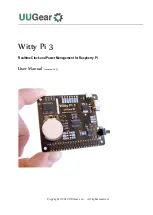
LTC3875
25
3875fb
For more information
www.linear.com/LTC3875
APPLICATIONS INFORMATION
a resistor divider and applied to the TK/SS pin. Therefore,
the voltage ramp rate on this pin is determined by the
ramp rate of the other supply’s voltage. Note that the small
soft-start capacitor charging current is always flowing,
producing a small offset error. To minimize this error, select
the tracking resistive divider value to be small enough to
make this error negligible. In order to track down another
channel or supply after the soft-start phase expires, the
LTC3875 is forced into continuous mode of operation
as soon as V
FB
is below the undervoltage threshold of
0.55V regardless of the setting on the MODE/PLLIN pin.
However, the LTC3875 should always be set in forced
continuous mode tracking down when there is no load.
After TK/SS drops below 0.1V, its channel will operate in
discontinuous mode.
The LTC3875 allows the user to program how its output
ramps up and down by means of the TK/SS pins. Through
these pins, the output can be set up to either coincidentally
or ratiometrically track another supply’s output, as shown
in Figure 9. In the following discussions, V
OUT1
refers to
the LTC3875’s output 1 as a master channel and V
OUT2
refers to the LTC3875’s output 2 as a slave channel. In
practice, though, either phase can be used as the master.
To implement the coincident tracking in Figure 9a, con-
nect an additional resistive divider to V
OUT1
and connect
its midpoint to the TK/SS pin of the slave channel. The
ratio of this divider should be the same as that of the
slave channel’s feedback divider shown in Figure 10a. In
this tracking mode, V
OUT1
must be set higher than V
OUT2
.
To implement the ratiometric tracking in Figure 10b, the
ratio of the V
OUT2
divider should be exactly the same as
the master channel’s feedback divider shown in Figure 9b.
By selecting different resistors, the LTC3875 can achieve
different modes of tracking including the two in Figure 9.
So which mode should be programmed? While either
mode in Figure 9 satisfies most practical applications,
some trade-offs exist. The ratiometric mode saves a pair
of resistors, but the coincident mode offers better output
regulation. When the master channel’s output experiences
dynamic excursion (under load transient, for example),
TIME
(9a) Coincident Tracking
V
OUT1
V
OUT2
OUTPUT VOLTAGE
V
OUT1
V
OUT2
TIME
3875 F09
(9b) Ratiometric Tracking
OUTPUT VOLTAGE
R3
R1
R4
R2
R3
V
OUT2
R4
(10a) Coincident Tracking Setup
TO
TK/SS2
PIN
V
OUT1
R1
R2
R3
V
OUT2
R4
3875 F10
(10b) Ratiometric Tracking Setup
TO
V
OSNS1
+
PIN
TO
V
OSNS1
+
PIN
TO
TK/SS2
PIN
TO
V
OSNS2
+
PIN
TO
V
OSNS2
+
PIN
V
OUT1
Figure 9. Two Different Modes of Output Voltage Tracking
Figure 10. Setup for Coincident and Ratiometric Tracking
















































